
ABS and the US Coast Guard R&D Center Team Up for Maritime Tech Development
American Bureau of Shipping (ABS) and the United States Coast Guard Research and Development Center (USCG-RDC) signed a memorandum of understanding (MoU) as a stepping stone towards collaborative research and development on top-of-mind technologies impacting the maritime industry.Activity under the MoU can include developing joint research publications, new technology qualifications and information sharing in a variety of research areas including remote and autonomous systems for uncrewed surface and underwater vehicles, advanced data analytics involving artificial intelligence and machine learning
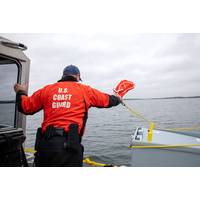
US Navy, Coast Guard Evaluate Use of Underwater Threat Detection System
Naval Undersea Warfare Center (NUWC) Division Newport’s Argus Expeditionary Maritime Defense System team recently partnered with the U.S. Coast Guard Research and Development Center to evaluate capabilities that could aid the Coast Guard’s detection efforts, particularly with counter-unmanned undersea vehicle missions.As part of its comprehensive efforts to provide maritime security and protect critical infrastructure, the Coast Guard is looking for solutions that would enable detection of unmanned undersea vehicles (UUVs) in near-shore environments. A limited user evaluation of the Argus
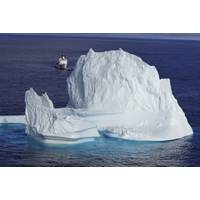
Beyond the Tip of the Iceberg Tech: RDT&E's Annual Arctic Technology Evaluation
The Coast Guard Research and Development Center (RDC) teamed up with Coast Guard Cutter Campbell’s crew this summer to evaluate five technologies as part of the RDC’s annual Arctic Technology Evaluation. The Campbell crew conducted the evaluations during their two-month deployment supporting joint Arctic operations off Greenland’s western coast, returning to their Kittery, Maine, homeport on Sept. 29, 2020.“Testing various technologies by cutter crews for operation in cold and Arctic environments provides highlights on what works and what may need improvement, and can help
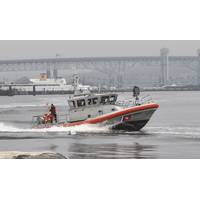
New Unit Will Support Coast Guard Research and Development Center
The U.S. Coast Guard Auxiliary will stand up its first unit dedicated to supporting the Coast Guard Research and Development Center (RDC) in New London, Conn. today.The new Auxiliary unit will support the RDC mission by coordinating requests for assets and skills in three focus areas: subject matter expertise, field research activities and public affairs. The new Auxiliary unit coordinator, Bruce Buckley, will develop a skills bank that matches Coast Guard research priorities to Auxiliary skill sets across the nation. The Coast Guard said it expects the unit will become a major force multiplier for
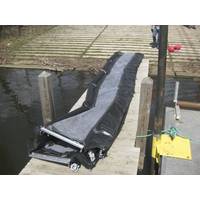
Coast Guard Tests Underwater Oil Barrier System
Members of the U.S. Coast Guard Research and Development Center oil spill response research team are testing an underwater barrier system designed to mitigate the impacts of sunken oil traveling along a river bottom.Mitigating or reducing the impact of oil is usually accomplished by minimizing the spread of oil on the river bottom and deflecting it, either to a collection area for recovery or away from sensitive areas. The underwater barrier system tested in Kalamazoo at the end of April 23 was specifically designed for deployment in inland water bodies such as rivers, streams and small lakes.Although
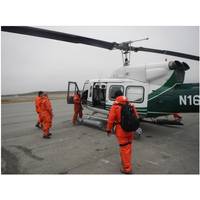
USCG Evaluates Comms Equipment in Alaska
Coast Guard Research and Development Center evaluates state-of-the-art communications equipment and Next Generation Incident Command System in Alaska At nearly 663,000 square miles, Alaska is the biggest state in the United States and over twice the size of Texas. The state’s size and the remoteness of its northern communities make emergency response challenging. In response to growing economic and tourism interests in the Arctic, Coast Guard District 17, Alaska Command and the State of Alaska and other state and federal partners will conduct a mass rescue exercise called Operation
Scientific Team Arctic-bound Aboard Cutter 'Healy'
A team of scientists from the Coast Guard Research and Development Center (RDC) is to depart shortly from Seward, Alaska, for a technology evaluation in the Arctic aboard the Cutter 'Healy informs USCG. The RDC is leading a multi-agency team to support Arctic Shield 2014, a 17th Coast Guard District initiative. The purpose of their month-long evaluation is to improve Coast Guard capabilities in the Arctic region, specifically in the areas of boat operations, communications, navigational safety and oil spill response. “The RDC plays a key role in charting the service’s future efforts
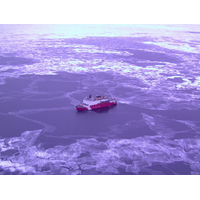
Research Conglomerate Collects Arctic Ocean Data
Crewmembers aboard Coast Guard Cutter Healy recently supported scientific research in the Arctic’s dynamic waters. As the crew supported vital scientific research, they were joined by a multitude of scientists and support staff from the National Intelligence University, U.S. National Oceanic and Atmospheric Administration, U.S. Air Force, Woods Hole Oceanographic Institution and University of Alaska. Dr. Peter Leitner, a professor and faculty member at the National Intelligence University, was aboard the red-hulled Healy and braved Arctic temperatures to understand the effects of extreme

Coast Guard to Test Arctic Oil Spill Technologies
The U.S. Coast Guard Research and Development Center (RDC) plans to test and evaluate oil spill detection and recovery technologies in the Arctic Ocean as part of Operation Arctic Shield 2013. A multi-agency team of engineers and scientists led by RDC researchers will conduct a series of demonstrations in September 2013 aboard Coast Guard Cutter Healy to test and evaluate capabilities of various unmanned aerial systems (UAS), an unmanned underwater vehicle (UUV) and a remotely operated vehicle (ROV) to search for simulated oil spills. To support planned UAS testing, the RDC has assembled a


 February 2025
February 2025





